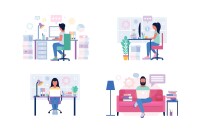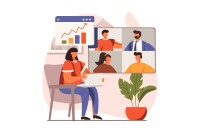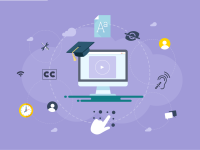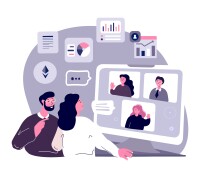Search
There are 156 results.
Category
Tag
Tag
All (156)
Active Learning (4)
Activities (5)
Alt Text (1)
Analytics (4)
Annotated Bibliography (1)
Assessments (15)
Asynchrony (5)
Authentic Activities (3)
Backwards Design (2)
Belonging (3)
Canvas (10)
Case Studies (2)
Collaboration (7)
Color Contrast (1)
Communication (11)
Community (9)
Competency-Based Education (5)
Content Creation (32)
Copyright (2)
Course Maintenance (6)
Course Materials (15)
Course Preparation (12)
Discussions (5)
Diversity (4)
Equity (2)
Faculty Presence (9)
Faculty Support (5)
Feedback (11)
Formative Assessments (9)
Game-Based Learning (2)
Gamification (1)
Generative AI (9)
Grading (8)
Group Work (2)
Images (4)
Inclusion (8)
Infographics (2)
Learning Objectives (4)
Multimodality (7)
Page Design (2)
Peer Review (1)
PowerPoint (2)
Presentations (3)
Qualitative courses (1)
Quantitative courses (1)
Representation (2)
Revising (2)
Revision (1)
Rubrics (4)
Scaffolding (1)
Screen Readers (1)
Social Media (2)
Summative Assessments (1)
Synchrony (7)
Third-Party Tools (2)
Universal Design for Learning (UDL) (4)
Video (13)
Visual Accessibility (2)
Visual Design (2)
Workforce Development (1)
Workload (1)
Written Assignments (1)
First Time Teaching Online
The online learning environment may seem vastly different from the on-ground classroom. With the right preparation, however, you can successfully translate on-ground teaching and expertise into the online modality and create an engaging learning experience for students. In this piece, we will walk through things you’ll want to look for and decisions you’ll need to make when teaching online for the first time, regardless of what course you’re teaching. Additionally, we also provide some specific examples that are particularly relevant if you are using the Canvas learning management system.
Best Practices to Support Student Well-Being
Mental health concerns are prevalent among undergraduate and graduate students and can have deleterious consequences (Chi et al., 2023; Venable & Pietrucha, 2022). In particular, students struggling with their mental health are less likely to pass their courses and more likely to drop out of their programs of study (Lister & McFarlane, 2021). While universities often provide support systems in the form of accessibility services and counseling centers, several significant issues can lead to the underutilization of available resources among students in general and online students in particular. First, students may need to be physically present on campus in order to access support systems (Lister et al., 2023). As a result, students enrolled in online programs may be unable to use them. Additionally, students may not capitalize on available resources due to logistical challenges (e.g., scheduling), feelings of discomfort in asking for help, or concerns about stigmatization (Venable & Pietrucha, 2022).
Matching Video Production Style to Learning Goals
You have decided to record a video for your course (See this Envision post first: Video Planning: To Record or Not to Record?). Your next concern might be choosing the technology that can match the production quality of the videos in MOOCs (massive open online courses) such as MasterClass or Coursera. But have no fear—research shows no association between production value and learning outcomes (Hansch et al., 2015; Sturman et al., 2018). Furthermore, selecting your technology without initial consideration of your video style would be premature. “When thinking about video for learning, the choice of video production style will have a great impact on a video’s ability to effect pedagogical objectives and desired learning outcomes” (Hansch, et al., 2015, p. 20). Production style refers to the holistic organization of a video, which we will discuss in terms of type (what the video aims to accomplish) and output (what the video looks like). Choosing the right style for the content centers the learner and ultimately facilitates an easier selection of technology.
Improving PowerPoints
Sharing information via PowerPoint presentations is a long-established strategy in higher education. Designing PowerPoint presentations for online courses can pose unique challenges; however, best practices can help overcome these hurdles. With time and attention, faculty and instructional designers can create engaging and purposeful presentations with lasting value.
Ten Ways to Open the Gate to Accessibility
According to the United States Census Bureau, over 57 million Americans, nearly one in five people in the U.S. population, report living with a disability. To make certain all your students can have a successful learning experience, it is important to take steps to make the online learning environment accessible. Here are 10 strategies for making your online course space accessible to all users.
Encouraging Effective Discussions
Online forums are valuable learning tools: they merit the time and thought it takes to create them, but they must be well-designed to be effective for instructors and students. Baker and Ahlegren (2022) note that instructors may start out with the best of intentions and a desire to achieve multiple goals, such as promoting critical thinking and fostering a community of authentic learners. However, discussion boards often become just another writing assignment, a missed opportunity to “elicit debate, inspire meaningful ideas, and fully engage the learning community” (Blakely et al., 2022, para. 6). When this happens, students can view discussions as transactional, not transformative.
Accessible Use of Color
Some students (older learners, learners with partial sight, learners with color blindness, and learners using monochrome or text-only displays) have difficulty perceiving color. To ensure that course content is perceivable to all learners, you should follow the color use guidelines that have been established by the World Wide Web Consortium (W3C), the organization responsible for international standards of web accessibility, including the Web Content Accessibility Guidelines (WCAG). Three essential WCAG requirements, known as success criteria, are summarized below.










